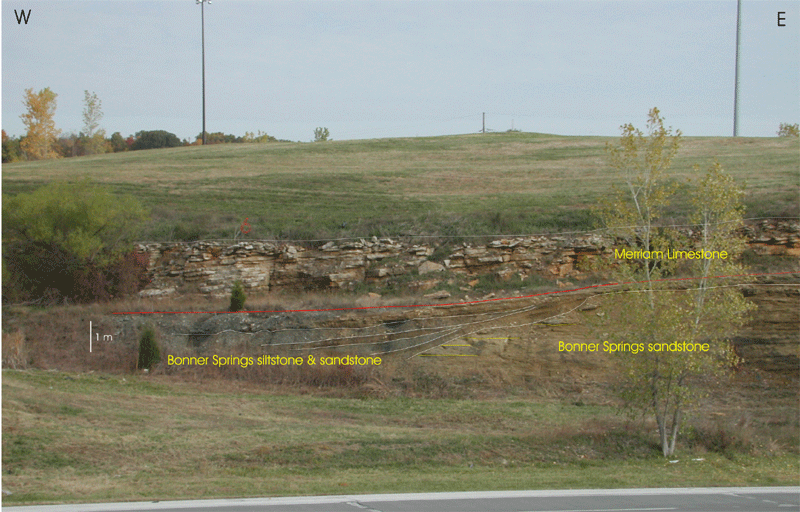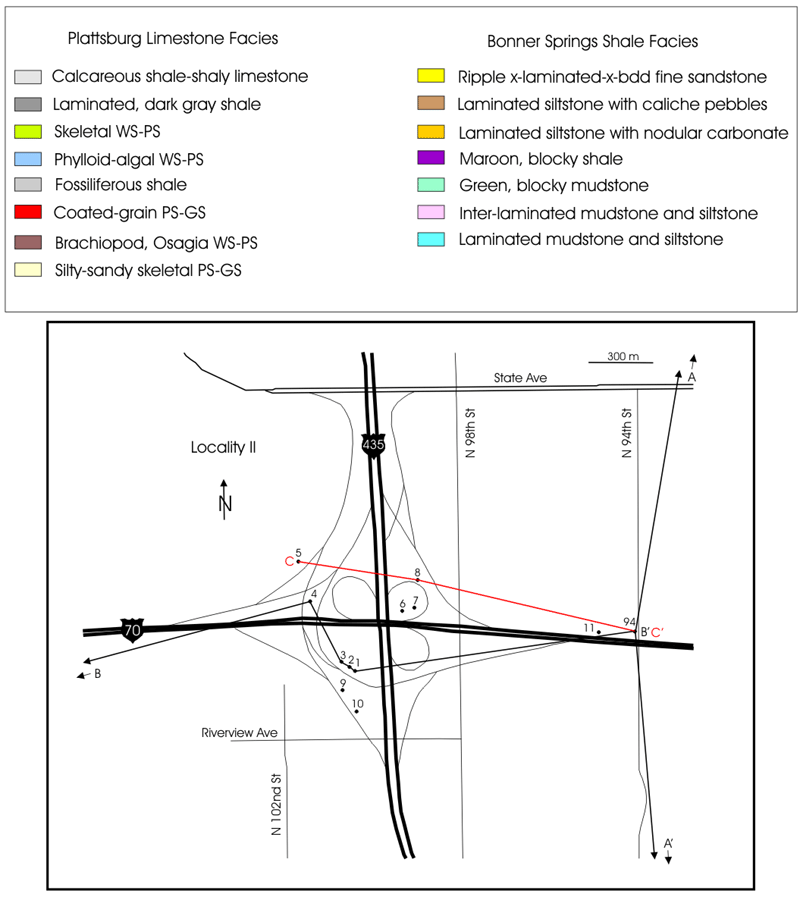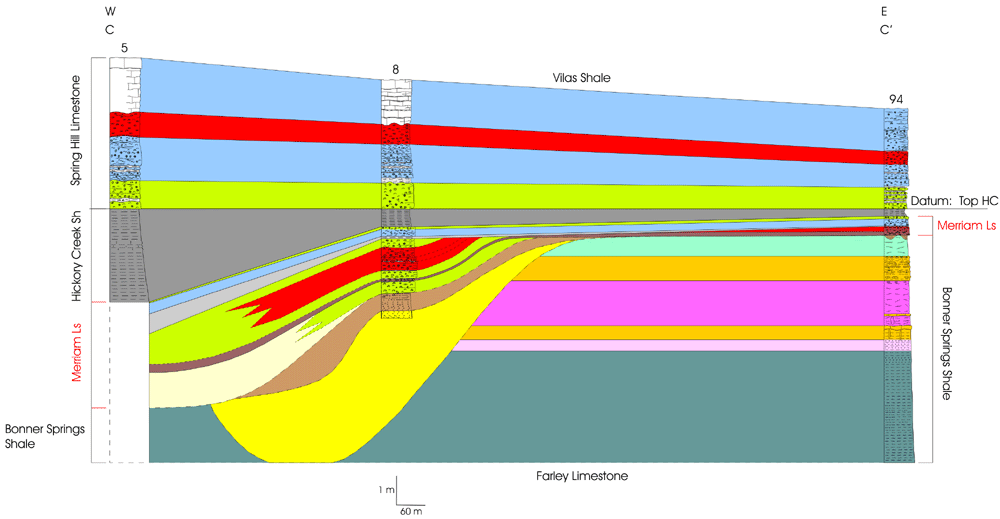Bonner Springs in section C-C’ shows a very different expression from that in section B-B’. Sandstone contains pebbles of gray shale (typical Bonner Springs facies), and marine fauna. Exposures indicate a NW-SE channel orientation, and paleocurrent directions also are mainly to the E-SE (landward). Siltstone and sandstone-filled channel contains transported caliche (?) pebbles and marine fossils. This channel runs NE-SW, roughly perpendicular to the sandstone-filled channel, and in a similar direction to the overlying channel filled by the Merriam. In the cross-section, note variation in the dominant Merriam facies filling the channel (coated-grain PS-GS alternating with skeletal WS-PS ). Fauna in the two facies are similar, and oncoids and ooids that are locally dominant were washed in from surrounding highs where they were formed. The fossiliferous shale unit in the Merriam, and the Hickory Creek Shale thicken to the NW as in section B-B’, whereas uppermost Merriam strata maintain consistent thickness and facies.

Outcrop photo showing multiple erosional events, similar to that shown in the above cross-section. Sandstone that has replaced the normal Bonner Springs Shale is truncated by a channel-form filled with siltstone and sandstone. This channel is in turn truncated by the Merriam Ls as it thickens to the NW.

|
|
e-mail : webadmin@kgs.ku.edu
Last updated May 2003
http://www.kgs.ku.edu/PRS/publication/2003/ofr2003-26/P2-02.html

